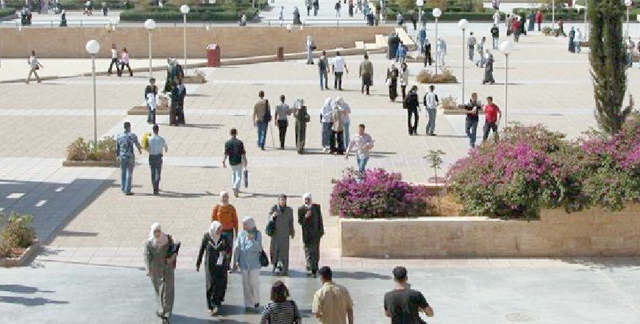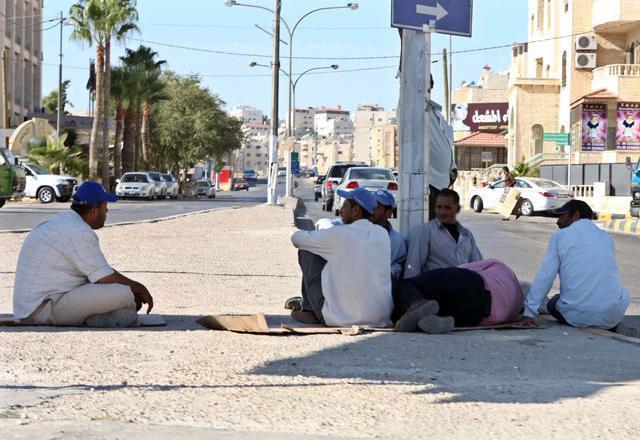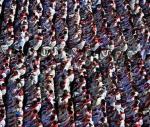You are here
Unemployment sees minor decline as gender disparities continue unabated — DoS data
By Ahmad Al Amaireh - Dec 26,2021 - Last updated at Dec 26,2021

The Department of Statistics released the third quarterly report for 2020, bringing a ray of optimism amid the catastrophic impact of the pandemic on the national economy (Image courtesy of SIGI facebook page)
AMMAN — The Department of Statistics (DoS) released the third quarterly report for 2020, bringing a ray of optimism amid the catastrophic impact of the pandemic on the national economy.
The data demonstrated a minor decline in the unemployment rate of 1.6 per cent for males and 2.3 per cent for females from the past quarter.
The decline comes with a gleam of hope among the public, as evidenced by social media posts. It reflects the lowest since the pandemic’s impact on the Jordanian economy, which has caused many businesses to close and people to lose their jobs.
However, measuring the unemployment rate on a quarterly basis, and basing optimistic expectations off of it “is futile and could potentially be deceiving, even if it demonstrates the economy’s slight recovery”, said economist Husam Ayesh.
As the unemployment rate fluctuates during the year, it is vital to focus on the general, and “alarming, continual projected rise of the unemployment rate”, which has doubled over the past decade in Jordan, Ayesh noted.
It is also critical to focus on the measures taken to address the repercussions and mitigate consequences, rather than the few sectors that grew during the past year and provided a number of new job openings for the public, or the businesses that recently reopened and returned to the market, justifying the slight decrease the country is witnessing, he added.
The unemployment rate for males during the third quarter of 2021 reached 21.2 per cent compared with 30.8 per cent for females.
“It is clear that we have a gender-bias in the labour market, exhibited through the aforementioned statistics, as there is a considerable gap between the unemployment rate of males and females, referred to by over-saturation of women in certain sectors based on traditional gender expectations, and the lack of businesses strategies that focus on providing women with equal services to their male counterparts,” Ayesh noted.
The DoS also revealed that the unemployment rate for males has remained stable, while there has been a considerable decrease for females, with a drop of 2.8 per cent since the third quarter of 2020.
According to Ayesh, this further proves that women were the societal demographic most adversely affected by the COVID-19 pandemic, and the recently-recovering sectors from the pandemic were mostly female-dominated, notably the education sector.
Moreover, the report shows a clear discrepancy in the distribution of the labour force by educational level and gender, as 57.6 per cent of the total male labour force had below secondary educational levels compared with 10.8 per cent for females.
The results also indicated that 73 per cent of the total female labour force has a bachelor’s degree or higher education level, compared with 25.9 per cent among males. Ayesh noted that this indicates that the Jordanian labour market is producing more jobs that do not require conventional education and that those jobs do not provide a safe environment for women, which could provide an explanation as to why it is predominated by men.
Ayesh noted that there is a “clear lack of attention” given to the governorates in the south of Jordan, in comparison to the centre and north, justified by the lack of development projects implemented with clear sustainable impact as well as the saturation of small and familial businesses that focus on services that have been negatively impacted by the COVID-19 pandemic.
The report noted that the highest employment rate is in the Tafileh Governorate at 29 per cent.
Political economist, Zayan Zawaneh, said that in order to limit the long-term impact of unemployment on the Jordanian economy,” we need to closely examine the pandemic’s impact on the country’s economic and social structure, as well as have future projections with a clear emergency plan”.
Furthermore, the government must adopt a national mid-term strategy to address various labour market concerns, promote vocational training, provide incentives for both employees and employers, and reform and resolve the informal labour sector, which accounts for nearly 40 per cent of Jordan’s labour market, Zawaneh said.
He emphasised the need to take advantage of the economical accords Jordan has with the neighbouring countries and create a regional market to provide new job opportunities and alleviate unemployment in the country.
Zawaneh highlighted the importance of joining forces to help create new jobs and fostering regional partnerships to start manufacturing a new, and hopeful, industrial park.
Related Articles
AMMAN — Reducing the unemployment rate in Jordan demands“fundamental” fiscal reforms, such as reviewing capital expenditure, increasing wage
AMMAN — Jordan's unemployment rate went down by 2.2 per cent in the first quarter of 2022 to 22.8 per cent, compared with the same quarter o
AMMAN — The unemployment rate in the Kingdom went down by 0.1 per cent in the third quarter of 2022 to reach 23.1 per cent, compared with th


















